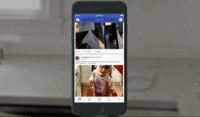Felix/Research: Difference between revisions
| Line 28: | Line 28: | ||
Whereas the motifs of the spaces are incarnated hyperrealities, the portraits show rather the hyperreal as an image that later through the people looking at the actual photograph (the real one, not the one I took), become hyperreal. | Whereas the motifs of the spaces are incarnated hyperrealities, the portraits show rather the hyperreal as an image that later through the people looking at the actual photograph (the real one, not the one I took), become hyperreal. | ||
== Readinglist == | == Readinglist == | ||
Revision as of 14:01, 3 December 2018
Currently (and forever) this is a rough overview on the variety on thematics I am interested in and more/less working on.
Subject (Draft)
- Links to methods from 17-10-18 (revised 6-11-18)
- What are you photographing? (Steve's question)
I am collecting appearances the world that I am living in (needs to be specified). For that I am making photographs of people in commercial photography (advertising) and real estate renderings found in public space as well as the public space itself by involving architectural spaces and commercial design impacts in public space.
The loose categories of imagery that I am creating are:
1) Portraits of the designed society
By re-photographing the people from the photographs visible on ad posters or retail prints that are visible in the public space, I am isolating portraits of contemporary fashion (i.e. fashion but also vogue and trend). The photographs are made on site, as seen, which results in an abstraction becoming visible caused by the sunlight or artificial lightning: The materiality of the print becomes visible but also its reflective characteristics create another layer, as does the reflection of the surrounding space in protective glasses in front of the print. Furthermore the print itself is abstracted by the close field-of-view that is making the printing-technique visible.
1.b)
A sub category of the above mentioned portraits make the portraits of people in architecture renderings („Render ghosts“, after James Bridle), that are photographed the same way. An abstraction though is rather created by the digital artifacts of the renderings and the layer of the printing technique than by reflections of glass, since the renderings are less often found behind glass in the public space.
2) Spaces for the people
The architectural public spaces photographed have artifacts created for humans in it that are „designed“ to have a specific use to them or, very broad spoken, want to create an aesthetical sojourn quality in it. Beyond spatial and architectural motifs, specific objects in the space, that are designed to add a feeling of naturalness to the constructed space, become subject of the photographs. By isolating these objects in the photographs, the opposite impact is created, they become signs of artificiality. The scenes are mostly photographed empty, without humans in it. The depicted objects though are clearly human-made and made for humans and therefore index to the existence of humans in the empty scenes.
The photographs are fragments that describe how a perception of reality is produced in the public. I understand the photographed as hyperreal simulations that again become reality through their existence or through humans’ reactions on the hyperreal’s impacts. They provoke feelings and desires, that reoccur in the medial perception of the society and therefore become real. Currently the motifs consist of the materialised public spaces in which the humans are only passively visible and on the other hand the immaterial (since they are taken from an image) portraits of humans.
Whereas the motifs of the spaces are incarnated hyperrealities, the portraits show rather the hyperreal as an image that later through the people looking at the actual photograph (the real one, not the one I took), become hyperreal.
Readinglist
- Simulacra and simulation, Baudrillard
- Virtual Art: From Illusion to Immersion, Grau, Oliver
- The Democratic Surround, Turner, Fred
- Text on FischliWeiss Visible World (DE)
- „Lock up a department store today, open the door after a hundert years and you will have a Museum of Modern Art“ And Warhol, 1985
- „Shop windows are still lifes not history paintings“ Karl Ernst Osthaus, 1913
- „Shopping malls are liquid TVs for the end of the twentieth century“ Arthur Kroker and David Cook, 1989
- „For me, shopping is like masturbating public“ Slavoj Zizek, 2002
- „Art in retail business serves the same function as colour for flowers and plumage for birds: it’s the means of attraction“ Friedrich Naumann, 1905
- Walker Evans (Storefronts)
- Gursky
- Richard Prince (Cowboys)

